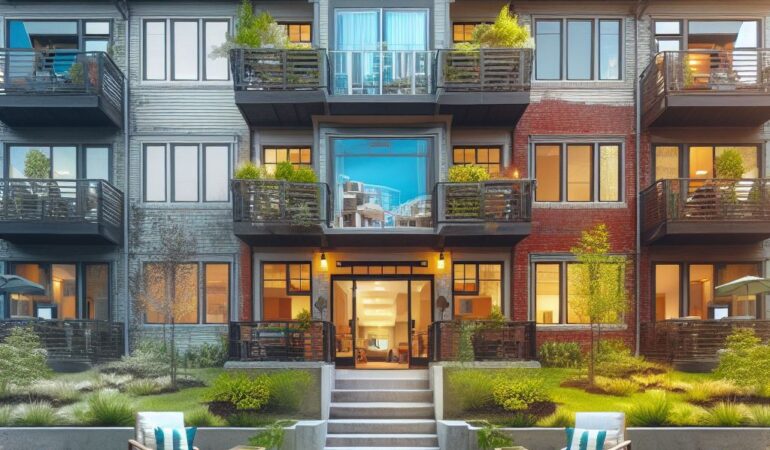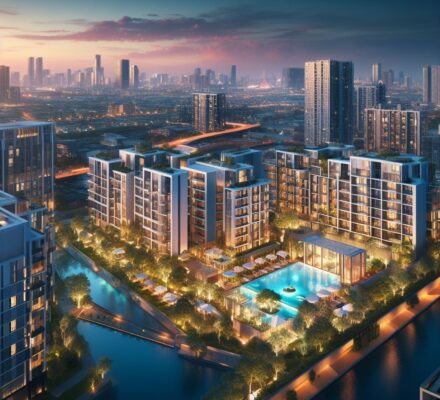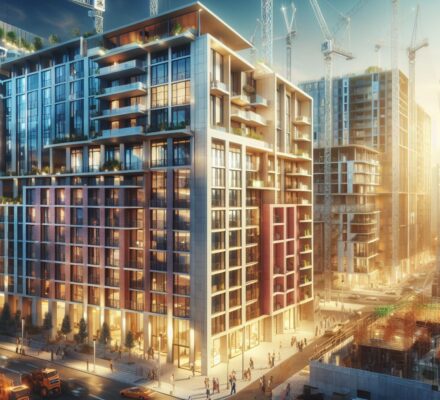You’re ready to transform your multifamily apartments into highly profitable investments. With the right insights and strategies, you can maximize returns and attract quality tenants.
In this article, we’ll guide you through the process of revamping your properties. We’ll start with selecting the right ones and securing financing. Then, we’ll move on to planning renovations and effectively marketing to potential tenants.
By following these steps, you’ll be able to make informed decisions that will set you up for long-term success in the multifamily real estate market. So, let’s get started!
Key Takeaways
- Analyzing demographics and target market preferences is crucial for selecting and evaluating properties for renovation.
- Budgeting and financing options such as traditional bank loans, private investors, personal funds, or partnerships should be considered for funding renovation projects.
- Design decisions should prioritize aesthetics, functionality, and features that enhance livability and convenience.
- Effective marketing strategies, both online and offline, should be developed to target the desired audience and attract tenants.
Property Selection
When selecting multifamily properties for investment and renovation, consider the specific needs and preferences of your target demographic. Analyzing the demographics of the area where the property is located is crucial in determining the demand for certain amenities and features. For example, if your target market consists mainly of young professionals, they may prioritize amenities such as a fitness center, communal workspaces, and high-speed internet. On the other hand, if your target demographic is families, they may prioritize features such as playgrounds, outdoor spaces, and proximity to schools. Understanding these preferences will allow you to tailor your renovations and attract potential tenants.
Additionally, it’s important to evaluate the condition of the property before making a decision. Conduct a thorough inspection to identify any structural issues, plumbing or electrical problems, or potential health hazards. Assessing the property’s condition will help you estimate the renovation costs and determine if the investment is financially viable.
By carefully considering the needs and preferences of your target demographic and assessing the condition of the property, you can make informed decisions about property selection. This will set the foundation for successful renovations that will meet the demands of your target market.
With property selection complete, the next step is budgeting and financing, where you’ll determine the resources needed to bring your renovation plans to life.
Budgeting and Financing
Once you have selected the ideal multifamily property for renovation, it is essential to carefully consider your budgeting and financing options to ensure a successful transformation. The budgeting process involves analyzing the costs associated with the renovation project, including materials, labor, permits, and any unexpected expenses that may arise. By creating a detailed budget, you can effectively manage your resources and avoid overspending.
When it comes to financing, there are several options available to fund your multifamily apartment renovation. One option is to secure a traditional bank loan, which typically requires a down payment and regular interest payments. Another option is to seek out private investors who are willing to provide the necessary capital in exchange for a share of the profits. Additionally, you may consider utilizing your own personal funds or partnering with other real estate investors to pool resources.
To help you visualize the different financing options available, here is a table showcasing the pros and cons of each:
| Financing Option | Pros | Cons |
|---|---|---|
| Bank Loan | Low interest rates | Requires down payment |
| Private Investors | Access to additional capital | Sharing profits with investors |
| Personal Funds | No reliance on external financing | Limited resources |
| Partnering | Pooling resources and expertise | Shared decision-making |
Design and Renovation Planning
Now that you have secured the necessary funds, it’s time to delve into the design and renovation planning process for your multifamily apartment. This stage is crucial as it sets the foundation for the entire project and determines the success of your investment.
As you embark on this journey, it’s important to approach the design and renovation planning with an analytical and strategic mindset.
Firstly, conduct a thorough assessment of your property to identify its strengths and weaknesses. Consider factors such as the layout, functionality, and overall condition of the space. This analysis will help you determine the areas that require the most attention and prioritize your renovation efforts accordingly.
Next, establish clear goals and objectives for the renovation. Are you aiming to increase rental income, attract a specific target market, or improve energy efficiency? Defining these goals will guide your design decisions and ensure that you stay focused throughout the process.
When it comes to design, consider both aesthetics and functionality. Think about the overall theme or style you want to achieve and how it aligns with the preferences of your target market. Additionally, prioritize features that enhance the livability and convenience of the space, such as ample storage, efficient appliances, and comfortable living areas.
Finally, create a detailed renovation plan that outlines the scope of work, timelines, and budget. This plan will serve as a roadmap for the entire project and help you stay organized and on track.
Marketing and Tenant Acquisition
To effectively market and acquire tenants for your multifamily apartment, you need to develop a comprehensive strategy that targets your desired audience. This requires understanding the needs and preferences of your target market and tailoring your marketing efforts accordingly. Here is a three-column table outlining key components of a successful tenant acquisition strategy:
| Component | Description |
|---|---|
| Online presence | Establish a strong online presence through a user-friendly website and active presence on social media. |
| Offline advertising | Utilize traditional methods such as flyers, billboards, and local newspaper ads to reach a wider audience. |
| Referral programs | Encourage current tenants to refer friends and family by offering incentives such as rent discounts. |
| Targeted marketing | Use data analysis and market research to identify and target specific demographics and preferences. |
| Community engagement | Organize events and activities that foster a sense of community and encourage tenant retention. |
Maintenance and Long-Term Management
Ensure efficient and effective maintenance and management of your multifamily apartments to maximize tenant satisfaction and property value.
As a property owner or manager, it’s crucial to prioritize the long-term maintenance and management of your multifamily apartments. By implementing strategic practices and investing in regular upkeep, you can ensure that your property remains in optimal condition while also attracting and retaining high-quality tenants.
Here are two key considerations to keep in mind:
- Proactive Maintenance: Regularly inspect and maintain the property to identify and address potential issues before they become major problems. This includes conducting routine inspections, completing necessary repairs promptly, and staying on top of preventative maintenance tasks such as HVAC servicing and landscaping upkeep. By being proactive in your maintenance efforts, you can minimize the risk of costly repairs and maintain a positive living environment for your tenants.
- Effective Communication and Tenant Relations: Foster strong relationships with your tenants through open and transparent communication. Establish channels for tenants to report maintenance issues and address their concerns promptly. Additionally, consider implementing a regular communication strategy to keep tenants informed about property updates, upcoming maintenance work, and any changes in policies. Building positive tenant relations can lead to higher tenant satisfaction, longer lease terms, and ultimately, increased property value.
Frequently Asked Questions
How Do I Determine the Potential Return on Investment for a Multifamily Apartment Property?
To determine the potential return on investment for a multifamily apartment property, you need to analyze factors like rental income, expenses, and market trends. Evaluating these will give you a clear picture of the property’s profitability.
What Are the Common Challenges Faced When Financing a Multifamily Apartment Renovation Project?
When financing a multifamily apartment renovation project, you’ll encounter various challenges. From securing loans to managing construction costs, it’s a complex process that requires careful planning and strategic decision-making.
How Can I Create a Design Plan That Maximizes the Appeal and Functionality of the Apartments?
To create a design plan that maximizes apartment appeal and functionality, start by assessing the current layout and identifying areas for improvement. Consider factors like space utilization, modern aesthetics, and practicality. Collaborate with professionals to ensure a successful renovation.
What Are Some Effective Marketing Strategies for Attracting Tenants to a Newly Renovated Multifamily Apartment Complex?
To attract tenants to a newly renovated multifamily apartment complex, consider effective marketing strategies. Focus on showcasing the upgraded features and amenities, utilize online platforms, engage with the community, and offer incentives to potential renters.
What Are the Key Factors to Consider for Long-Term Maintenance and Management of a Multifamily Apartment Property?
When considering long-term maintenance and management of a multifamily apartment property, you should focus on factors such as regular upkeep, efficient budgeting, proactive communication with tenants, and staying updated on industry trends.




